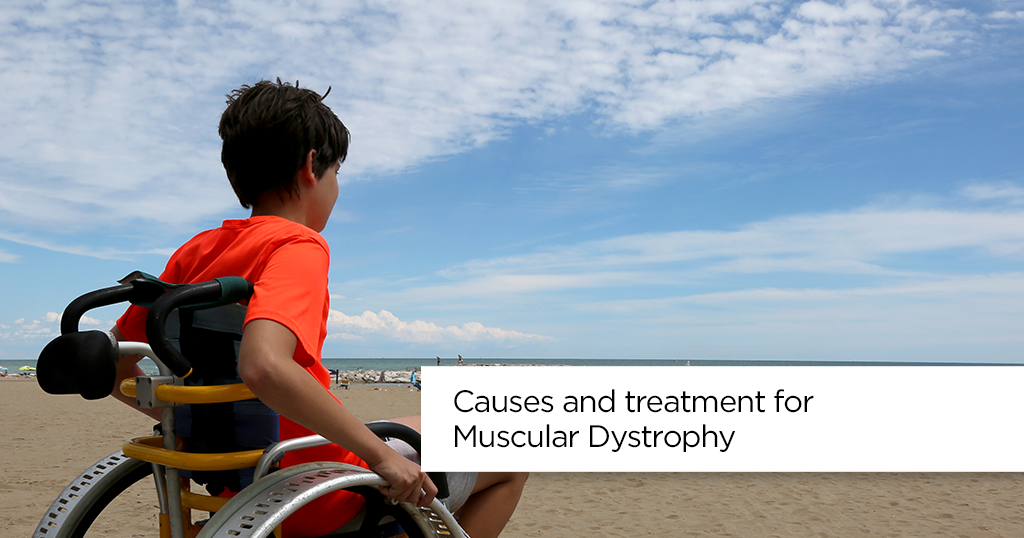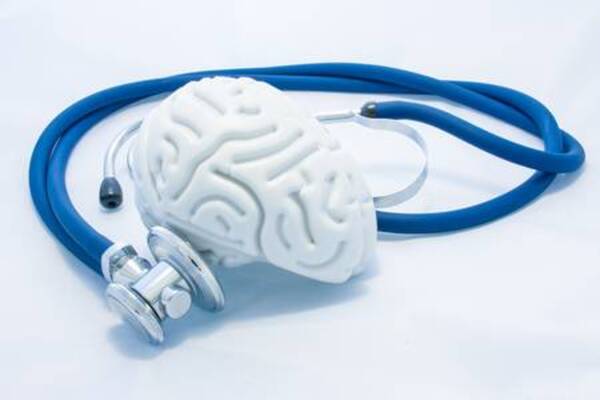Causes and treatment for Muscular Dystrophy


Overview
Muscular dystrophy refers to a group of inherited diseases which damage and weaken your muscles over time. They cause loss of muscle mass and lack of the dystrophin protein which is required for normal muscle function. Mutations take place and abnormal genes interfere with the normal production of proteins that are needed to form and maintain healthy muscles. It can occur at any age, but most cases are diagnosed at childhood. Muscular dystrophy is a rare medical condition. So, it is important for us to learn more about this progressive muscular weakness disease.
What is Muscular Dystrophy?
Muscular dystrophy implies to a group of disorders which cause the progressive loss of muscle mass followed by a loss of strength. There are as many as thirty different types of muscular dystrophy. The most common type is the Duchenne muscular dystrophy which generally affects young boys. This medical condition involves the absence of a protein known as dystrophin which causes problems in walking, swallowing and muscle coordination. This protein is essential for the building and repairing of muscles in your body. There is currently no cure for this disease, but treatment therapies help to relive symptoms and slow down the pace of the disease.
Symptoms of Muscular Dystrophy
There are more than 30 types of muscular dystrophy, all of which vary in their symptoms and severity. For diagnosis, there are nine different categories referred to. Specific signs start at different ages, in different muscle groups, depending on the type. Here are the common symptoms for the general categories:
-
Duchenne type
This is the most common form. It is much more prevalent in boys. Signs and symptoms include difficulty in running and jumping, frequent falls, waddling gait, large calf muscles, trouble getting up from lying or sitting position, muscle pain, stiffness and learning disabilities.
-
Becker type
Most signs are similar to the Duchenne type, but are much milder. Other symptoms include muscle cramps, walking on toes or trouble getting up.
-
Myotonic type
This is also known as the Steinert’s disease. It is characterized by the face and neck muscles getting affected first. Symptoms include drooping face muscles, droopy eyelids, weak neck muscles, early baldness, cataracts, weight loss etc.
-
Congenital type
This type affects both boys and girls. It happens right at birth or in the first 2 years of a person’s life. Symptoms include muscle weakness, inability to sit or stand without some form of support, trouble while speaking, swallowing or seeing, poor motor control, scoliosis (curved spine), foot deformities, respiratory issues and intellectual impairment.
-
Facioscapulohumeral type
In this type of the disorder, muscle weakness starts in the face and shoulders. The shoulder blades may stick out when such patients raise their arms. Slanted shoulders, difficulty in chewing, and a crooked look of the mouth are some common symptoms.
-
Limb-girdle type
Hip and shoulder muscles are first affected in this type. Symptoms include difficulty in getting up from a chair, taking stairs, easily tripping, inability to carry heavy items etc.
Causes of Muscular Dystrophy
Muscular dystrophy could happen due to genetic mutations – more specifically the mutations on the X chromosome. The specific genes which are required to synthesize the protein that protects muscle fibers from damage are defective. Now, these genetic mutations are generally inherited, but some may be also spontaneously developed in the mother’s egg or embryo. Each kind of muscular dystrophy is caused due to a gene mutation that is specific to that kind. It could occur in both the sexes and at all ages, but the Duchenne type happens to mostly young boys, the Becker type occurs between ages of 11 and 25, Congenital type happens at birth, Myotonic type happens between ages 20 to 30, and the Lamb Girdle type could disable people till they turn 20. The risk is undoubtedly higher for people having a family history of muscular dystrophy.
Treatment for Muscular Dystrophy
Currently, there is no absolute cure for this disease, however, medications and various other therapies help to slow down the progression and try to keep the patient mobile for as long as possible. Treatments include:
-
Medications
Corticosteroids help to increase the muscle strength and slow down the progression. Beta blockers and angiotensin-converting enzyme inhibitors helps if it affects the heart. Eteplirsen has been approved as an injection medication which helps with a specific kind of DMD gene mutation. Anti-seizure drugs, immunosuppressant, and creatine supplements are other options.
-
Physical therapy
This makes the use of different exercises and stretching motions to help keep the muscles flexible and mobile. Low-impact exercises like walking and swimming also helps.
-
Occupational therapy
This teaches children to make the most of what their muscles are capable of doing. Therapists demonstrate and make them learn the usage of wheelchairs, braces, canes or walkers. They are also taught how these can assist them in daily life.
-
Speech therapy
These exercises help the patients to talk easier than before and cope with weak throat or face muscles.
-
Breathing therapy
This will help the patient in case of breathing troubles. He/she will learn easier ways to breathe and also make use of other devices like ventilator.
-
Surgery
Finally, surgical procedures are used to treat the different complications of this disease, like heart problems, swallowing difficulties, scoliosis, cataracts etc.
Prevention of Muscular Dystrophy
As this disease is centered around gene mutations which could happen randomly or due to family history, there is no way to prevent or reverse muscular dystrophy. However, with the correct treatment, therapies and support from loved ones, one can have a better quality of life and delay the progression of the disease. So, it is very important for a MD patient to eat a healthy, well-balanced diet, stay active, get enough sleep and use the correct assistive devices.
Conclusion
Muscular dystrophy is a disorder that can be different for different people. The disease progresses at different paces in different individuals. So, it is very important to discuss thoroughly and learn everything about the kind of muscular dystrophy you or your child has. Together with healthcare professionals, you could decide on the best treatment plan. As treatment methods are advancing, the average life expectancy of such patients will continue to get better.
© Copyright 2024. Apollo Hospitals Group. All Rights Reserved.
 +91 8069991061
Book Health Check-up
Book Health Check-up
Book Appointment
Book Appointment
+91 8069991061
Book Health Check-up
Book Health Check-up
Book Appointment
Book Appointment







